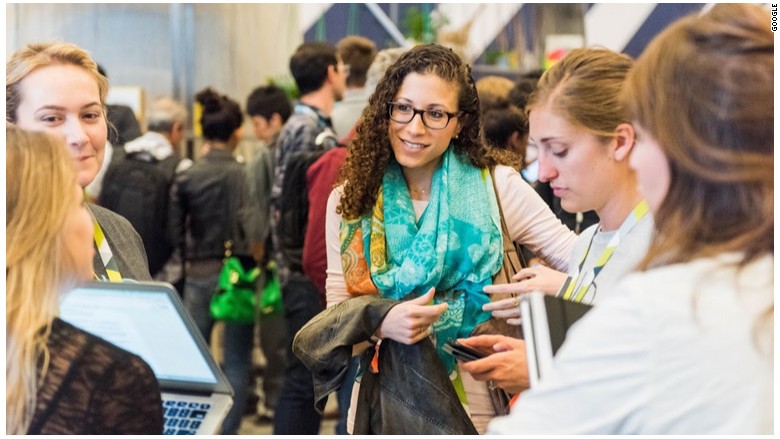
Laura Palmaro was 10 years old when she rubbed her eyes and noticed something was wrong with her vision. She had a hemorrhage in the left eye and lost central vision, part of a rare condition called choroidal osteoma.
The same condition struck her right eye four years later. Overnight, she'd become legally blind, retaining only peripheral vision. She was unable to read or see a blackboard.
"It seemed like everything I loved was being stopped. It was very difficult at that point to find out where to go from there," said Palmaro, now 27.
The eighth grader's family pitched in to get her through school. By her senior year she had discovered screen readers -- software that reads text out loud. She stripped the bindings off of her books, scanned their pages and had the software read to her.
That's when she realized the impact technology could have on someone with a disability.
Palmaro is now a program manager at Google (GOOG). She's using her own unique perspective to make the Chrome browser work for people with disabilities. For example, there are magnification features and an extension that customizes a web page for the colorblind.
Related: Apple, Google, Microsoft and the race to look diverse
All the big technology companies have dedicated teams working on accessibility -- making software and hardware features that allow people with disabilities to use them. Employing people who have disabilities is one way to make sure tools are built with accessibility in mind.
Someone with perfect vision might not think to design traffic maps that can be understood by a colorblind user. YouTube engineer Ken Harrenstien, who is profoundly deaf, made it his mission to work on closed captioning for videos.
"If you don't have an immediate family member or a friend who has a disability, you simply don't know. It's not that you want to exclude someone who has a disability, you just don't know it," said Astrid Weber, a user experience researcher at Google whose work has been influenced by a close friend with MS.
Weber collaborates with Google's thousands of engineers and designers to make them think of accessibility while building products. She encourages employees to design with empathy, and to drop certain assumptions, like that everyone can touch an Android device or hear the sound an app makes.
"We achieve great results in interdisciplinary teams with people who have personal experiences with disabilities and people who have not," said Weber.
Related: There's finally something awesome to do with Google Glass
Designing for accessibility is a smart investment, especially as an aging population begins to experience failing eyesight and hearing. According to the World Health Organization, more than 1 billion people globally have some kind of disability.
"It's a very important part of the market, but also a group of people that's traditionally underserved by technology," said Eve Andersson, the manager of Google's accessibility engineering group.
Features built for accessibility can end up improving the products for mainstream users. Auto-complete features were originally created for people with disabilities who had difficulty typing. Now it's built in to most smartphones. Screen magnification and closed captioning tools are often used by people without disabilities.
At Google, new engineers are required to take hands-on workshops on mobile and web accessibility. The company hosts accessibility awareness days for employees and an annual diversity summit for organizations like Autism Speaks and the National Federation of the Blind. It tests tools internally with employees who don't work in accessibility but happen to have a disability, and brings in users for research studies.
"Every person should be able to use our products and enjoy them," Palmaro said.

